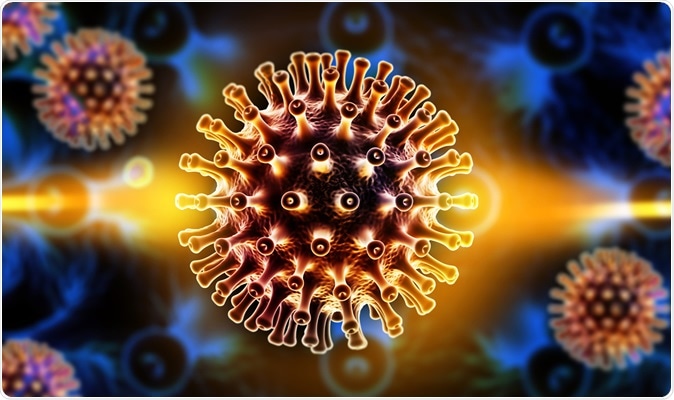A man in London, England is now free of HIV/AIDS after stem cell transplant therapy. This is the second such case after Timothy Ray Brown from the United States was cured of HIV in Germany some 12 years ago.

HIV Virus - Illustration Credit: Liya Graphics / Shutterstock
This new case in London also used a stem cell transplant. Experts have warned that stem cell transplant in these cases may not be free of danger and could be fatal or ineffective. This new success however has shown that it may work in some patients. The results of this new case and its details were published this week in the latest issue of the journal Nature. It will be presented at an HIV conference in Seattle.
According to the report, the patient was diagnosed with HIV in 2003 and was on anti-HIV drugs since 2012. That same year, he developed Hodgkin lymphoma and was treated with stem cell transplant for the cancer in 2016. The physicians treating him found a donor marrow that contained a gene which is naturally resistant to HIV infection. They had found that northern Europeans descendents possess a genetic make-up that make them immune to HIV infection. The donor marrow for this case had a double copy of this mutation at the CCR5 gene.
CROI 2019: Timothy Ray Brown HIV Cure Celebration (Pre-conference Cure Research Workshop)
Lead researcher Ravindra Gupta of University College London explained that they hoped that this transplant would help the cancer as well as the HIV infection. He said it was an “improbable event” and “has not been observed more frequently.” After the transplant the patient developed a resistance to the HIV infection. He stopped the anti-HIV drugs voluntarily to see if the cancer was coming back. In usual cases the virus tends to resurface within two to three weeks after stopping the drugs. Even after 18 months since he stopped the medication, the virus has not returned say the researchers.
Dr. Gero Hutter, who treated the first German patient and cured him of HIV applauded this second case and said that it was a “piece in the HIV cure puzzle.” Prof Ravindra Gupta cited the unethical research by the Chinese scientist where he created designer babies with the CCR5 gene-editing to make them immune to HIV. He said, “A field was generated as a result of the Berlin patient. You may have heard of the Chinese babies that were having experimental knockout of that particular gene...What this second case says is this is a bonafide research target and probably the most promising we have for any HIV cure.” “It’s important because there are 36 million-odd people with HIV worldwide. The aim is to get everybody on treatment for the rest of their lives and that’s a huge undertaking both for drug delivery but also making sure people can stay on medication for decades. There is a cost issue for developing countries,” he said in a statement.